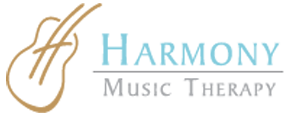Instrument Exploration at Home with Young Kids
As part of our ‘Using Music in Your Home’ series, here are some ways to incorporate playing instruments in your home or classroom to support early childhood learners.
Kids LOVE creating sounds and exploring!
Music is a universal language that transcends boundaries and below are some easy ways you can give your kids some tools to play with and explore without too much effort. Which will reap so many benefits. Instrument exploration links to many common goals for young kids, such as: improved socialization, literacy, executive functioning, sensory tolerance, or following instructions, to name a few.
Home Made Instruments
If you are unable to purchase instruments, you can easily use whatever is already in your house.
We suggest that you have a “music time” where the kids get to bang on pots and pans, make shakers out of Easter Eggs, rice/popcorn, and glue, or even strike up some body percussion (clapping, stomping, tapping hands on legs, snapping fingers, etc.). You can create rhythms together and have a lot of fun exploring sounds. There are also lots of ideas online on making instruments at home and we’ve included a few below.
Homemade Drums
Aside from giving up all your pots and pans for your child to make their own drum kit, you can create drums at home using other everyday items like soup cans, Pringles containers, or even a tabletop. All you need is some kind of a drum stick to tap along with. Balloon drums are another fun option. Take any old tin, mug, or saucepan you have in the cupboard, a deflated balloon, and an elastic band. Cut an opening into the balloon at its widest point making a semicircle-shaped incision. Then rinse the balloon with water, so that it sticks and stretch it over the top.
DIY Tambourine
Another form of percussion is a homemade tambourine. You can also make a quieter version of this instrument at home using paper plates and jingle bells.
Water Xylophone
You can make a water xylophone by filling glasses with different amounts of water and tapping the glasses with a spoon, your kids can hear all the different tones that are produced. This is a great activity to complete with a friend (or little brother or sister), too.
Homemade Rainstick
A rainstick offers another distinct noise often associated with indigenous cultures. You can make one with a cardboard tube, some ribbons, paper, and pebbles or beans for the sound.
Paper Plate Banjo
Parents.com offers instructions for making your own paper plate banjo. This is a fun way to introduce string instruments to your child.
Instruments Kits
If you want something that is a little more durable or requires less time, there are a lot of low-cost instrument kits you can purchase. I recommend searching for “instrument rhythm set” or “kids musical instruments”. There are a lot of varieties out there, but some of the things you should look for in a kit include:
- Shakers
- Drum with drumsticks
- Xylophone
- Bells
- Rhythm sticks
- Kazoos (usually not included in kits)
These are a few of our favorites, which cover a lot of different budgets:
Instrument Kits Under $25
Instrument Kits Under $35
- Wooden Percussion Instruments with Storage Bag
- Early Learning, Musical Toys for Age 3 to 10 Toddlers
- Wooden Kids Drum Set
Individual Instruments Under $20
- Melissa & Doug Caterpillar Xylophone
- NINO Plastic Egg Shakers
- Kids Percussion Lollipop Drum
- Colorful Hand Bells
- 8 Inch Rhythm Natural Hardwood Sticks
- Metal Kazoos
Disclaimer: We will get a small commission if you purchase a music kit through our affiliate links, although we only post items that we feel are high quality and would meet the intent of your search.
Playing Instruments vs. Music Therapy
There are some really important differences between simply playing instruments and the services provided by a music therapist.
At a most basic level, playing instruments is just fun! In each of us there is an innate desire to create, and picking up an instrument and realizing it makes a unique sound by the way we interact with it is so satisfying. When we setup a booth at an event, one of my favorite things is watching curious little kiddos (and adults) come over to our table of instruments. They love picking up each instrument to see what sounds they can make with it. I even had one kid start recruiting other kids and adults to start an impromptu band! I love to see the joy that music sparks in our lives.
As a music therapist, I use this natural curiosity and desire to motive our clients. For example, we may use beating a drum to help a client develop some strength or to help them with impulse control. In our sessions we use a wide variety of instruments to engage our clients to work on their individual goals, by doings something that doesn’t ‘feel like therapy’.
So for a music therapist, using instruments is not just about making music; it’s about facilitating communication, expression, and healing.

